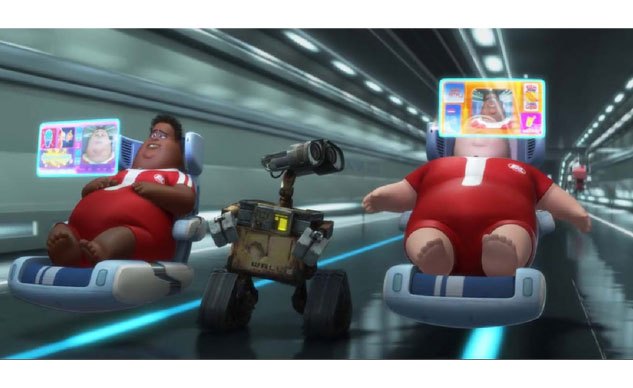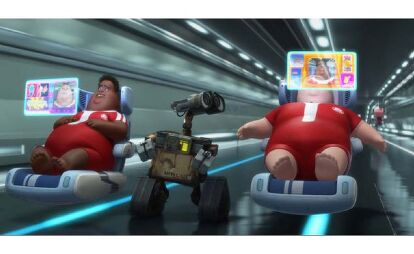Tomfoolery - Autonomous Motorcycling
Are you aware that BMW’s Highly Automated Driving prototype technology is capable of drifting a 2 Series coupe? Check out the video below, specifically from 0:58 to 1:06 and witness an autonomous stunt that’s cameo worthy in the next Fast & Furious.
You’ve probably heard about the forthcoming smart cars or have maybe even seen the driverless Google car being tested. While cars featuring basic autonomous capabilities are already in dealership showrooms, consumer availability of completely autonomous cars hasn’t arrived, yet, but the advent of that technology is gaining momentum. According to a Morgan Stanley research report, “completely autonomous cars are likely to be available before the end of the decade.”
Can’t happen. Won’t happen. Motorcycle operation is a complicated and delicate balance of man and machine that technology is incapable of reproducing, you say? I, too, scoffed at the notion, thinking that when this advanced technology arrives I will have already retired my riding boots. Then I came across this guy…
Jingjang Yi is an Associate Professor at the Department of Mechanical and Aerospace Engineering at Rutgers. His compendium of work includes the following titles:
- Autonomous Motorcycles for Agile Maneuvers, Parts I and II
- Autonomous Control of Riderless Motorcycles
- Vision-based motion planning for an autonomous motorcycle on ill-structured roads
- Vision-based navigation for an autonomous motorcycle on ill-structured roads
- Balance control and analysis of stationary riderless motorcycles
- Velocity field-based maneuver regulation of autonomous motorcycles
- Trajectory tracking and balance stabilization control of autonomous motorcycles
- Dynamic Modeling of Riderless Motorcycles
Co-author on many of these studies is Dezhen Song, Associate Professor in the Department of Computer Science and Engineering at Texas A&M University. Song provided me with the video below, shot in 2006.
Clearly, the video demonstrates the technology required to operate an autonomous motorcycle existed nearly a decade ago. Initial research focused on utilizing autonomous motorcycling technology for use in search and rescue missions in addition to military applications. According to Song, the benefits of autonomous motorcycles is that they can access about 98% of terrain which makes an autonomous motorcycle a good candidate for this type of operation.
A Great Recession later and government funding has dried up like a desert flood wash, leaving Song and his autonomous motorcycling collaborators without compensation. When Song approached major motorcycle OEMs, he discovered companies such as BMW were uninterested in pursuing autonomous motorcycle technology outside of safety purposes such as vehicle-to-vehicle communication addressed in my last editorial, The Future Of Motorcycle Safety Awareness Month.
Lacking any commercial viability, Song has broadened his approach to developing algorithms for all autonomous vehicles, using his autonomous motorcycle research for developing human motor-skill testing. He’s also tackling issues related to the deployment of autonomous technology.
“Basically, we’re trying to lower the barrier for human psychological acceptance because it’s hard to believe autonomous technology is reliable,” says Song. “And also lower the barrier for non-technical issues such as insurance. If a self-driving car hits someone, who’s going to be responsible for that?”
If an autonomous car is facing an imminent crash with one of two motorcyclists: one who is wearing a helmet, and one who is not, a proficient algorithm accounts for the much-higher statistical odds that the biker without a helmet will die if struck, and therefore, in the name of crash optimization, chooses to strike the helmeted motorcyclist.
Is this the correct moral/ethical decision or an injustice? By choosing to strike the helmeted motorcyclist, the autonomous algorithm is penalizing the helmeted motorcyclist for being responsible and safety conscious. Meanwhile, the unhelmeted motorcyclist is spared, even though that rider is guilty of irresponsibility and lacks common sense self-preservation instincts.
Thinking about the infinite scenarios surrounding autonomous technology makes my brain hurt. When a dog runs into the street, does your autonomous motorcycle choose to plow the dog or ride you into a brick wall? An autonomous car must choose between striking a car with four passengers but better protection vs. striking a motorcycle with one passenger but less protection. Which vehicle gets hit?
Ugh, please pass the Vicodin.
Cost remains a problem, but like other technologies, complete autonomy will first be introduced on luxury vehicles and then filter to less expensive vehicles as prices decrease. I trust the timeframe from now until the ubiquity of autonomous cars and motorcycles is reached will provide ample opportunity to solve these technological/moral/ethical dilemmas.
How autonomous technology, and all the promises and problems associated with it, will affect motorcycles and riders will slowly play out before our eyes. Who knows. Future motorcyclists may one day view twistgrips to be as novel to them as kickstarters and drum brakes are to us.
For now, I aim to enjoy full control over the motorcycles I ride, accepting both risk and reward. But maybe, some day, I’ll be able to ride to the local dive bar, get sh*tfaced, then take a leisurely, helmetless and ultimately safer ride home than my current sober, properly outfitted self can. That’s me looking on the bright side of the future.
A former Motorcycle.com staffer who has gone on to greener pastures, Tom Roderick still can't get the motorcycle bug out of his system. And honestly, we still miss having him around. Tom is now a regular freelance writer and tester for Motorcycle.com when his schedule allows, and his experience, riding ability, writing talent, and quick wit are still a joy to have – even if we don't get to experience it as much as we used to.
More by Tom Roderick




































Comments
Join the conversation
This tail-wags-the-dog approach to "making things safer" is the usual practice of working from the back end forward, instead of addressing the BIG issue: driver training, at least in this country, is appallingly non-existent. And the numerous distractions that take attention and eyes off the road is amazing to me. "TV" screens on the dash, oh sorry, info-tainment/radio/heating/communication screens that require you to actually look at them to operate them. No wonder people are crashing into each other. The push for autonomous cars is inevitable because no one wants to address the real issue. Until the process to get a driver's license in this country is upgraded and taken more seriously, the average driver will continue to have a nonchalant attitude about driving proficiently. Yeah, I'm an idiot, how dare I think that. I'm with Glynn Kerr, anyone (within reason of course) who wants a drivers license and is physically able should be required to take a training course to get their motorcycle license, and operate a motorcycle for two years before they can get the training and license to drive a 4-wheel vehicle.
Think auto manufacturers will build 300 +hp cars, that cost $100,000+ just to plod along at the posted speed limit, just like the 60 hp mini city car in traffic right next to it? Think Ferrari, Lotus, Bugatti will voluntarily go belly up? The whole concept is a PR stunt! The public will never embrace this nonsense!